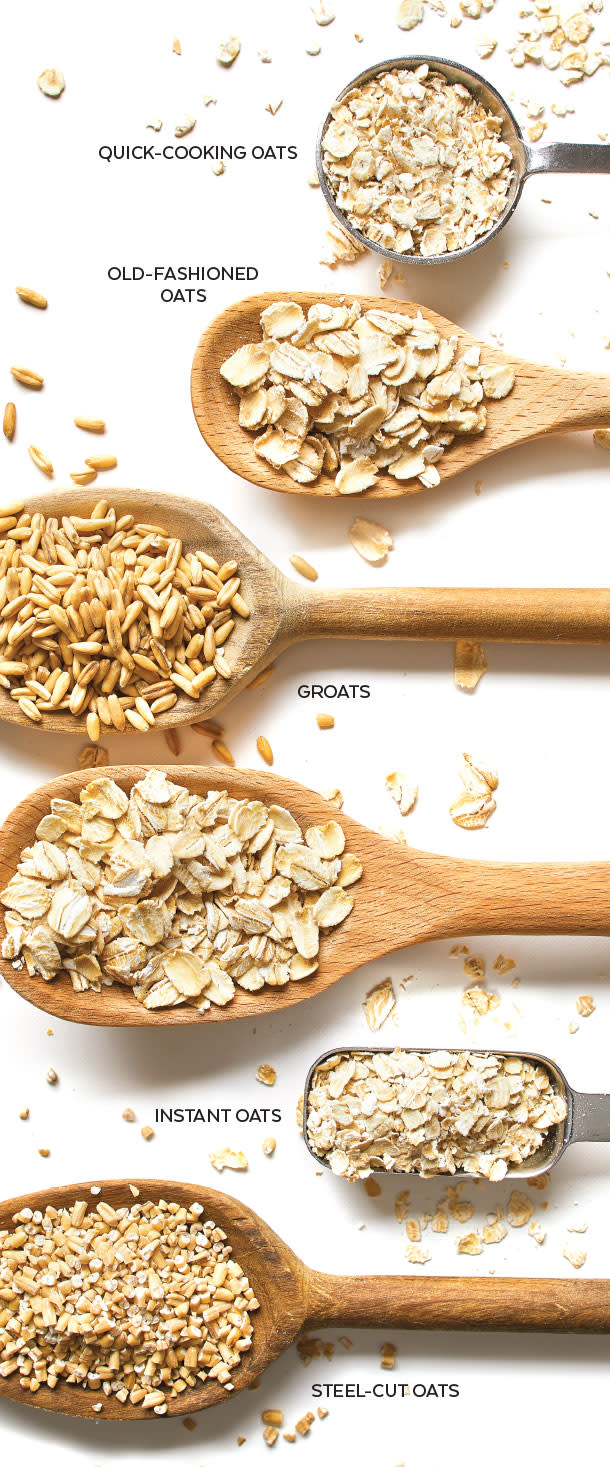Know Your Oats: Groats, Steel-Cut, Old-Fashioned, Quick-Cooking, and Instant
With so many different names, oats can sound confusing, but the differences are actually pretty simple.

What's the difference between groats and oatmeal? All oats start as the whole oat grain, which is called a groat. The degree of processing determines the oat type — steel cut, old-fashioned, etc. And all oats that we eat, no matter how unprocessed, have at least been cleaned, toasted, and hulled.
Groats are the least refined type of oats. They’re most often found in health food stores, and they take the longest to cook.
Steel-cut oats, sometimes called Irish oatmeal, are groats cut into two or three pieces with a sharp metal (steel) blade, hence their name. These oats typically take longer to cook than rolled oats, from 15 to 60 minutes.
Old-fashioned (or Rolled) oats are groats that are steamed and flattened or pressed between two huge rollers, thus their name. This type cooks in 5–20 minutes.
Quick-cooking oats are groats taken through the same process as old-fashioned oats, but they’re first cut into several pieces, to become much thinner flakes. They cook in just 1–5 minutes. Though old-fashioned and quick-cooking oats are almost always interchangeable, the texture and flavor of quick-cooking oats are not as satisfying.
Instant oats are those packets of oatmeal, often flavored, that you just add hot milk or water to (or you can microwave them). Basically, they’re old-fashioned oats that have been pre-cooked and dried before rolling. This type softens upon contact with liquid, turning baked goods into lumpy messes — skip them when baking.
Product Recommendations
Interested in cooking? Need some supplies?
Check out some of the tools we like. All products featured on Cuisine at Home are independently selected by our editors; we may earn an affiliate commission from qualifying purchases through our links.